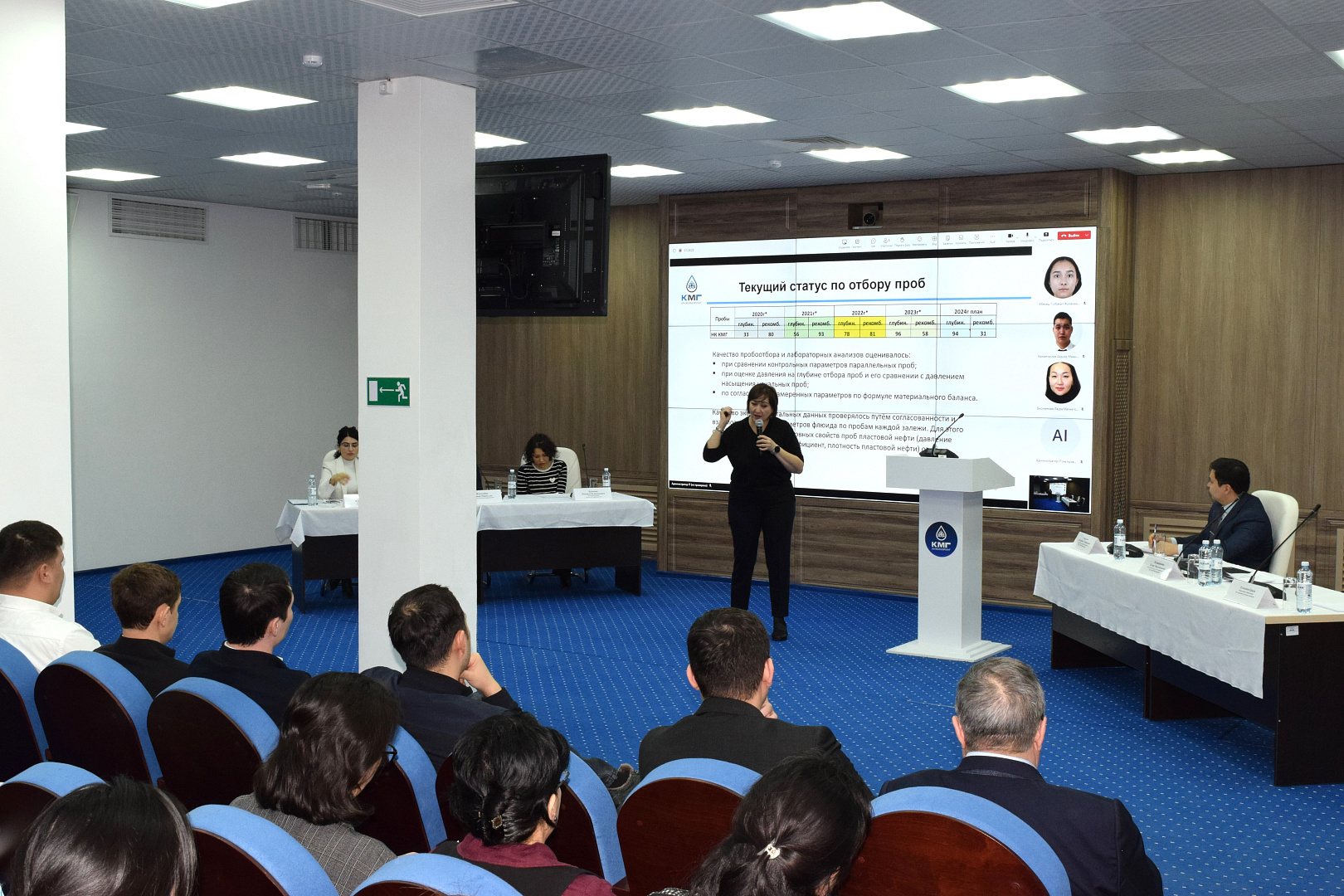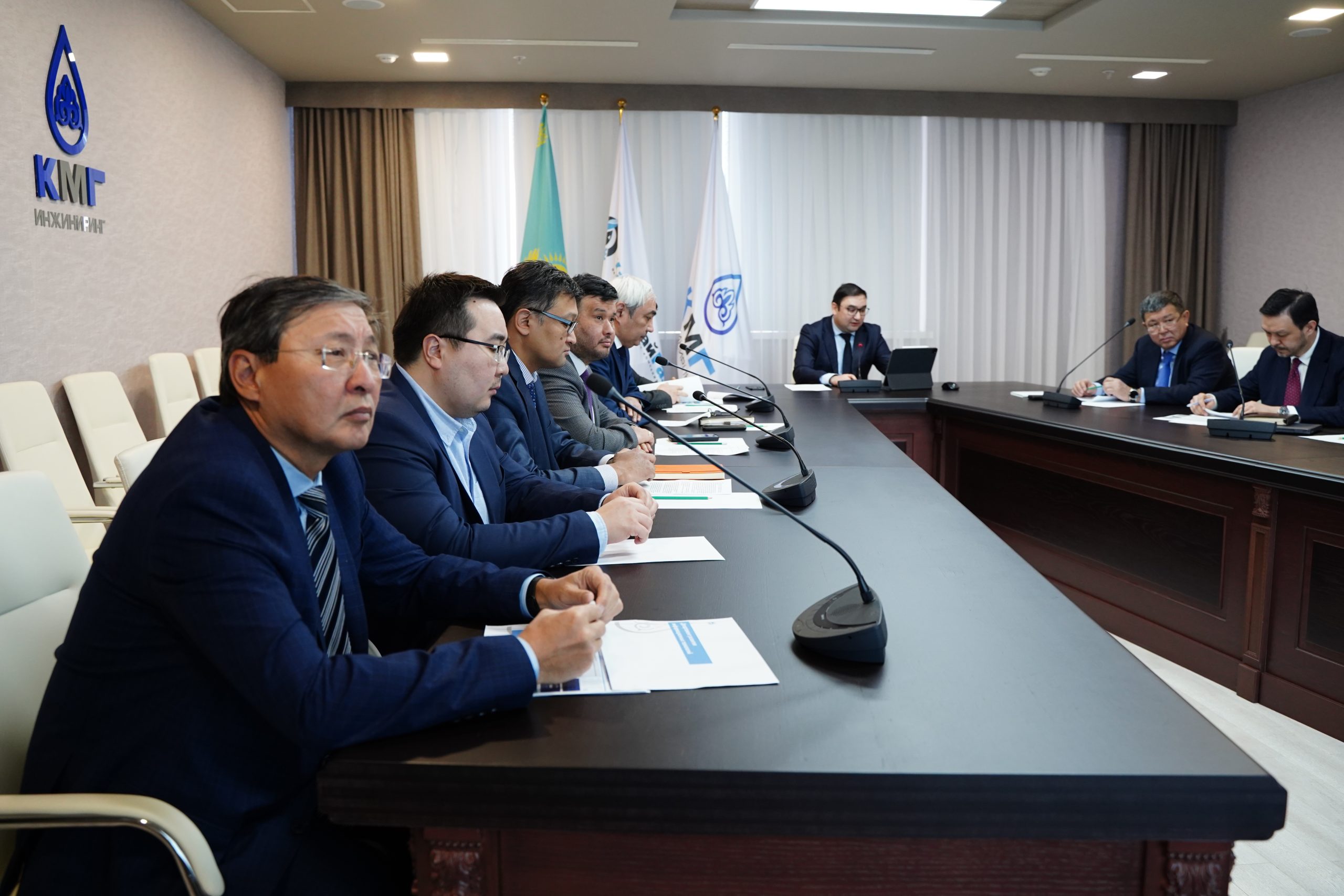Polymer Flooding Technology Experience
- 18.10.2022
- News-Eng
- Comments Off on Polymer Flooding Technology Experience
- sdauren
On the example of the Nuraly field, the Intellectual Club meeting participants studied Kazgermunai JV LLP, conducted at KMG Engineering.
Arman Akhmetov, Lead Field Simulation Engineer at Kazgermunai JV LLP, was the speaker. In his speech, he explained the project site’s main problems, the stages of the PF project, the studies conducted, the reasons for the PF shutdown and the current situation following the shutdown, as well as the alleged theoretical phenomenon of “post-effect”.
According to the speaker, the main difficulties in the development of the Nuraly field were the high degree of average number of permeable intervals and the presence of washed high-permeability channels, and the unproductive pumping of water. One of the solutions to the development difficulties was the use of polymer flooding, which allowed the blocking of channels with low filtration resistance and redistribution of filtration flows, resulting in a more consistent distribution of the injection displacement front. Increased vertical water flood coverage in the reservoir leads to increased oil production, which improves the oil recovery factor.
A. Akhmetov described the stages of polymer waterflooding at the considered field in his speech. In detail, he introduced the participants to the PF technology, injection modes, applied concentrations and viscosities of polymer solution. Separately, he focused on the parameters of groundwater and artesian water used. KGM experience has shown that switching to artesian water reduces the concentration of the polymer solution from 2,000 to 400 ppm while increasing the viscosity of the polymer solution by two times and reducing dry powder consumption by 2.5 times.
According to the speaker, an analysis of the results of field geophysical works and tracer studies for the period of PF implementation reveals that as a result of prolonged injection of polymer solution in high-permeability zones of the productive formation of the PF section, an “impressive polymer screen” formed, which clogged the high-permeability channels and contributed to filtration flow redistribution.
The PF project was completed on December 31, 2019, with the transition to produced water injection. In October 2020, a working group of experts from KMG, KMGE, and KGM was formed to assess the impact of shutting down the PF and to develop conditions and recommendations for future actions at the PF site. For example, according to the Protocol condition of the working group, “if the oil production curve of the area will be below the “post-effect curve” mark for 3 consecutive months, the EOR technology shall be considered”. The specialists of Kazgermunai JV LLP have been conducting special continuous monitoring of the dynamic production of the block since that time. Except for a short time in September 2022, monitoring reveals no significant deviations from the working group’s accepted “norms.” During this time period, the monthly average of the site flow rate approached the “post-effect criterion” curve.
“Some experts have predicted inevitable substitution of polymer with water in the area from injection wells toward production wells, and they have provided hypothetical dates when such negative phenomena will occur. However, no obvious water breakthroughs to the production wells have been recorded so far. We continue to monitor”, the reporter shared.
When analyzing the study results, it was discovered that, among the many examples of PF shutdowns, the KGM experience is a precedent, which did not have negative consequences immediately after the termination of polymer waterflooding. Any deterioration in production dynamics, if any, is likely to occur in the indefinite future.
“Conditional posteffect is confirmed by the results of conducted studies, namely: tracer studies; field geophysical studies (GIS-K); estimation of polymer yield in produced fluid. As of today, the total amount of additional oil production from the use of the PF technology is 251,596.3 tons, of which 80,523.5 tons have been obtained after the PF shutdown. Over the entire period of project implementation, 843 tons of dry powder were injected. As a result, the average indicator of additional oil production per ton of polymer is 298.4 tons. The current compensation for fluid withdrawal via injection at the PF site is 72.5%, with a total compensation of 96.6%. According to the generally accepted conditions of the PF working group, oil production at the site has not fallen below the KPI line for three consecutive months, so the previously injected polymer body can be considered to be operating at the PF site”, the speaker concluded in his speech.
For reference:
The Intellectual Club was launched in 2020 with the support of KazMunayGas NC JSC. This club held 16 meetings with the participation of employees of KazMunayGas NC JSC and its subsidiaries and affiliates: Ozenmunaigas JSC, Embamunaigas JSC, Karazhanbasmunai JSC, Kazgermunai JV LLP, Mangistaumunaigas JSC, Kazakhturkmunay LLP, Kazakhoil Aktobe LLP, Urikhtau Operating LLP, as well as KMG Engineering LLP.





